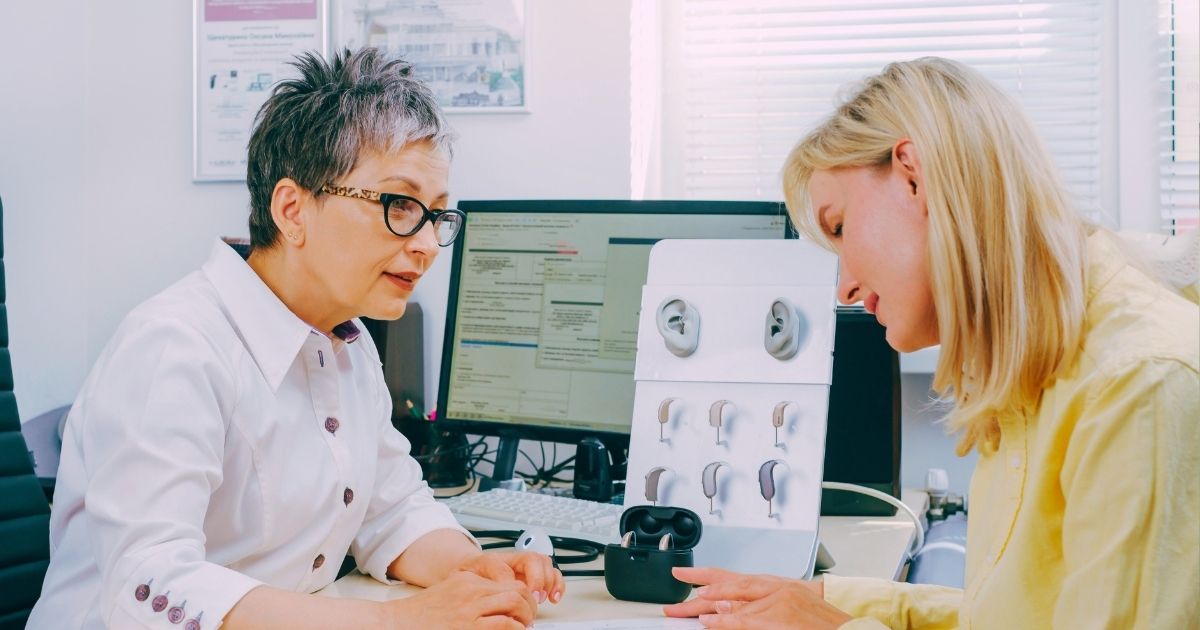by Meagan Lewis, AuD
The world is changing, will we?
Hearing Aids: The Social Policy View
Recent changes at a national level are opening the door for consumers to gain more direct access to hearing technology.
- The FDA announced that people over the age of 18 no longer need medical clearance to purchase hearing aids.
- PCAST (Presidential Council of Advisors on Science and Technology) released statements that hearing aids were too expensive and not easily obtained by the general public, paving the way for the FDA to make an over-the- counter class of hearing aids.
In many ways, it’s a whole new world for audiologists.
Personal Views
From a personal perspective, I have to agree with the changing perspectives and changes they are bringing. Please don’t throw stones yet!
My twin brother has mild to moderate, sensorineural hearing loss and functions well with his devices. However, he is the world’s worst hearing aid patient. He ran over “daddy’s earrings” (as my nieces call them) with the car. They now function only intermittently, but he will not own up to it because he doesn’t want to have to pay for new devices. They are expensive and his health insurance will not cover them.
I want- need– my brother to hear and I don’t want cost to deter him from hearing.
Alternatively, take the case of a staff member’s sister who has not been able to afford hearing aids for years. She was interested in a PSAP and I agreed to fit her and verify the fitting. We looked at them together and I was surprised to find that in an itemized model the cost of the PSAP plus associated services was comparable to an entry level hearing aid.
I can provide appropriate audibility, verification, and options and cover my time while helping her.
That’s the goal and it’s realizable.
First Steps Toward the Goal
I have to say that this project began with a best practice initiative. Our team of dispensers poured over articles to create a guideline. What evidence-based procedures are going to provide our patients with the best outcomes over the least visits? With only a little gnashing of teeth, several assessments were decided upon in addition to LDLs, real ear measures, EAA, and speech-in-noise testing. After the completion of the protocol, the group was proud- but concerned.
Together with our resident spreadsheet wizard, we began looking at several items:
- what exactly is our overhead, salaries
- how many days a year are taken for conferences or vacation
- how many average visits does a patient have during the life of his/her hearing aid.
Then we looked at all the procedures that are involved in fitting the device:
- the consult
- the electroacoustic analysis
- fitting and orientation
- conformity, etc.
We assigned a charge based on the amount of time required and our cost per hour. Because we thought there may be a subset of our patient population that prefers to pay for all their services up front, we also created service packages based on the average number of visits that may occur over the period of 1 year, 3 years, or 5 years.
In the next post, we discuss our first steps in implementing our “unbundling” efforts.
**This is part 2 of the Unbundling series by Dr. Lewis. Click for part 1 and part 3.
Meagan Lewis, AuD is the manager of the audiology department at Wake Forest Baptist Medical Center, a large university and medical school based health care system in North Carolina. Wake Forest, under Meagan’s lead, is an early adopter in breaking away from a ‘bundled “price for hearing instruments. There is much interest in this topic, and Meagan has agreed to share her experiences to date, with periodic updates as the new approach settles in.







Sooo… how come your brother doesn’t just pay for a repair. Intermittent function is not indicative of the entire device needing to be replaced, but of a repair issue. Repairs are not cost prohibitive in comparison with purchasing a new device, and I can get you information on a reputable repair company if you don’t know one.